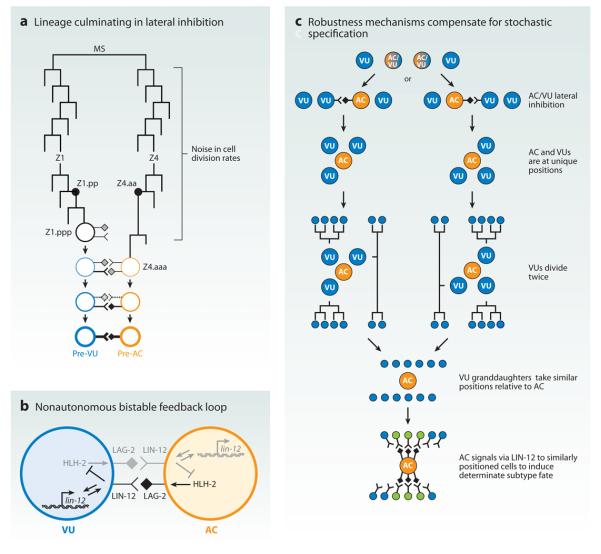Figure 5.
Cell positioning and signaling compensate for stochastic lateral inhibition in the worm vulval developmental pathway. (a) The precursor cells of the anchor cell (AC, orange) and the ventral uterine precursor (VU, blue) have similar lineage origins. Variability (i.e., noise) in cell division rates results in stochastic precursor birth order. The first-born precursor cell has higher LIN-12/Notch activity that biases lateral inhibition. The cell with high LIN-12/Notch takes on the VU fate, whereas the cell with low LIN-12/Notch activity takes on the AC fate. The first division at the MS cell stage has been inverted for illustration purposes (adapted from Karp & Greenwald 2003). (b) LIN-12 lateral inhibition generates two exclusive fates via a nonautonomous bistable feedback loop (adapted from Karp & Greenwald 2003). The bHLH transcription factor, HLH-2, mediates this feedback loop. (c) Robustness mechanisms, including reproducible cell positioning and directional LIN-12 signaling, compensate for the stochastic AC/VU decision.

